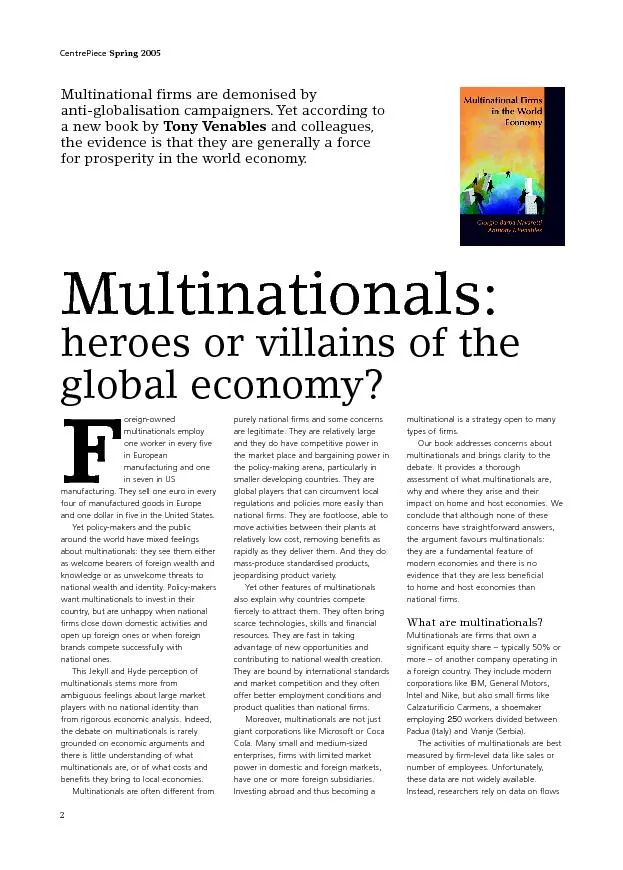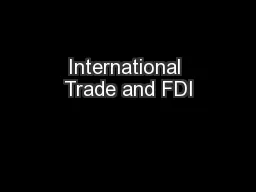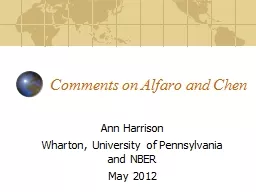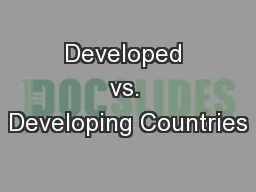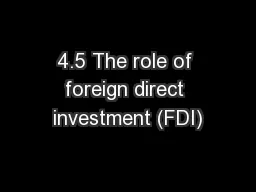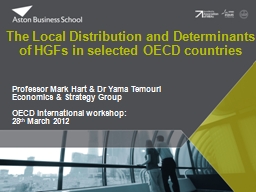PDF-Fact 3: FDI goes predominantly toshare of developing countries hasThe
Author : test | Published Date : 2016-06-29
CentrePiece Spring 20054 Table 1Crossborder MA investments as a percentage of FDIinflows to the host countries19879119929419959719982001World6629447560187623Developed
Presentation Embed Code
Download Presentation
Download Presentation The PPT/PDF document "Fact 3: FDI goes predominantly toshare o..." is the property of its rightful owner. Permission is granted to download and print the materials on this website for personal, non-commercial use only, and to display it on your personal computer provided you do not modify the materials and that you retain all copyright notices contained in the materials. By downloading content from our website, you accept the terms of this agreement.
Fact 3: FDI goes predominantly toshare of developing countries hasThe: Transcript
Download Rules Of Document
"Fact 3: FDI goes predominantly toshare of developing countries hasThe"The content belongs to its owner. You may download and print it for personal use, without modification, and keep all copyright notices. By downloading, you agree to these terms.
Related Documents

